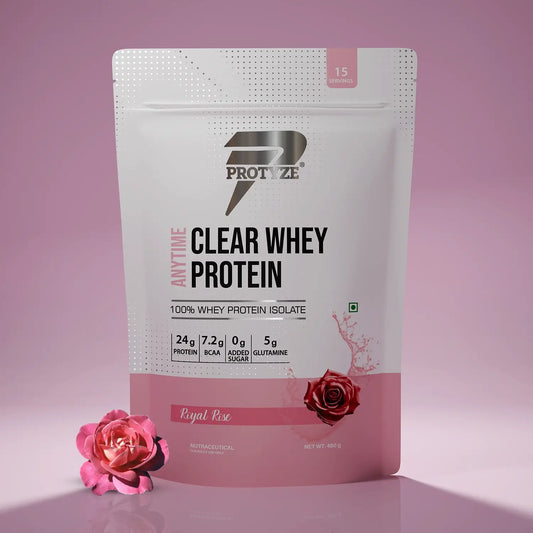The incline bench press is a powerhouse move for building a strong, defined chest. By targeting the upper pectorals, it creates that full, balanced look while boosting strength for pushing movements. Whether you’re a beginner or a seasoned lifter, perfecting this exercise can elevate your chest workouts to new heights.
In this Blog, we’ll break down the incline bench press with step-by-step technique tips to maximize gains, highlight common mistakes to avoid, and share ways to integrate it into your routine for a serious chest workout upgrade. Plus, we’ll tie in how Protyze Nitro Clear Whey can fuel your recovery. Let’s press our way to a bigger, stronger chest!
Why the Incline Bench Press Is a Chest Game-Changer
The pectoralis major—your chest muscle—has two main regions: the clavicular (upper) and sternal (lower) heads. The incline bench press emphasizes the upper pecs, which are often underdeveloped compared to the lower chest (hit harder by flat presses).
It also recruits the anterior deltoids and triceps, making it a compound lift that builds strength and size. Research shows incline presses activate the clavicular head up to 30% more than flat presses (Journal of Strength and Conditioning Research, 2010), ideal for a sculpted, proportional chest. Barbells allow heavy loads for strength, while dumbbells offer range and stability. Here’s how to master it.
How to Perform the Incline Bench Press: Technique Tips
Nailing the incline bench press requires precision to target the upper pecs effectively and avoid injury. Follow these steps and tips for perfect form.

Equipment Needed
- Incline bench (set to 30-45 degrees)
- Barbell or dumbbells
- Optional: Rack, spotter (for heavy barbell sets)
Step-by-Step Guide (Barbell Incline Bench Press)
- Set Up the Bench: Adjust the bench to a 30-45-degree incline. Angles above 45 degrees shift focus to shoulders, per EMG studies (Journal of Sports Sciences, 2016).
- Position Yourself: Lie back on the bench, feet flat on the floor for stability. Your eyes should be under the bar if using a rack.
- Grip the Bar: Grab the bar with an overhand grip, hands slightly wider than shoulder-width (about 1.5x shoulder distance). Unrack the bar with straight arms.
- Starting Position: Hold the bar above your upper chest, arms extended. Retract your shoulder blades (pinch them together) and keep your chest puffed up.
- Lower the Bar: Bend your elbows, lowering the bar in a controlled arc to your upper chest (just below your collarbone). Elbows should stay at a 45-degree angle to your torso.
- Press Up: Drive the bar back up to full extension, squeezing your pecs at the top. Keep your wrists straight and avoid locking out elbows harshly.
- Repeat: Perform 3-4 sets of 6-8 reps for strength or 8-12 reps for hypertrophy, using 70-85% of your one-rep max.
Dumbbell Variation
For dumbbells, follow the same steps, but hold a dumbbell in each hand at chest level, palms facing forward. Press up until dumbbells nearly touch, then lower to the sides of your upper chest. Dumbbells allow a deeper stretch and correct imbalances.
Technique Tips for Maximum Chest Gains
- Optimal Angle: Stick to 30-45 degrees. A 30-degree angle maximizes upper pec activation without over-recruiting delts (Journal of Strength and Conditioning Research, 2017).
- Retract Shoulder Blades: Pinning your scapulae to the bench stabilizes your shoulders and isolates the pecs. Think “chest up, shoulders back.”
- Control the Eccentric: Lower the bar in 2-3 seconds to increase time under tension, a key driver of hypertrophy (Sports Medicine, 2015).
- Elbow Positioning: Keep elbows at a 45-degree angle to your body—not flared out (shoulder strain) or tucked in (triceps focus).
- Breathe Right: Inhale as you lower, exhale as you press. Bracing your core prevents arching your lower back.
- Use a Spotter: For heavy barbell sets, a spotter ensures safety and confidence, letting you push closer to failure.
Common Mistakes to Avoid
Even experienced lifters can slip up on the incline bench press. Here’s what not to do:
1. Setting the Bench Too Steep
- Problem: An angle above 45 degrees (e.g., 60 degrees) shifts work to the anterior delts, reducing upper pec activation.
- Fix: Use a 30-45-degree incline. Check the bench setting before starting.
2. Flaring Elbows
- Problem: Elbows at 90 degrees to your torso strain the shoulder joints and risk impingement.
- Fix: Keep elbows at a 45-degree angle. Imagine tucking them slightly toward your ribs.
3. Bouncing the Bar
- Problem: Dropping the bar to your chest and bouncing it up uses momentum, not muscle, cutting pec engagement.
- Fix: Lower slowly (2-3 seconds) and pause briefly at the chest before pressing.
4. Arching the Lower Back
- Problem: Excessive back arch lifts your chest unnaturally, stressing the spine and reducing pec focus.
- Fix: Keep your butt and upper back glued to the bench. Engage your core and plant your feet.
5. Lowering to the Wrong Spot
- Problem: Bringing the bar to your mid or lower chest targets the sternal head, not the upper pecs.
- Fix: Lower to just below your collarbone (upper chest). Practice with an empty bar to find the path.
6. Overloading Too Soon
- Problem: Lifting too heavy sacrifices form, risking shoulder or pec strains.
- Fix: Start with a weight you can press for 8-12 clean reps. Progress by 5-10 lbs every 2-3 weeks.
Sample Chest Workout with Incline Bench Press
To upgrade your chest workout, make the incline bench press a cornerstone. Here’s a routine:
- Barbell Incline Bench Press: 4 sets x 6-8 reps (heavy, 80% max)
- Dumbbell Flat Bench Press: 3 sets x 8-10 reps (hits lower pecs)
- Incline Dumbbell Fly: 3 sets x 10-12 reps (stretches upper pecs)
- Cable Chest Press (Incline Angle): 3 sets x 12 reps (constant tension)
- Push-Ups (Feet Elevated): 3 sets x 15 reps (bodyweight finisher)
Rest 90-120 seconds for compounds, 60 seconds for isolation. Train chest 1-2 times weekly, with 48-72 hours recovery.
Variations to Enhance Your Incline Bench Press
Keep your chest workouts fresh with these variations:
- Dumbbell Incline Press: Increases range of motion and fixes imbalances.
- Paused Incline Press: Pause for 1-2 seconds at the chest to boost strength off the bottom.
- Incline Smith Machine Press: Locks the bar path, letting you focus on pec contraction.
- Low-Incline Press (15-20 Degrees): Slightly shifts focus to mid-pecs for variety.
Nutrition to Support Chest Gains
A strong chest needs fuel. Key tips:
- Protein: Target 0.8-1g per pound of bodyweight daily (e.g., 160g for 200 lbs). Post-workout, Protyze Nitro Clear Whey (30g protein, 3g creatine) aids recovery when mixed with water (not milk).
- Calories: Aim for a 200-500 kcal surplus for muscle growth. Include 2-4g carbs per pound (e.g., rice, sweet potatoes) for energy.
- Timing: Eat 20-30g protein and 40-60g carbs 1-2 hours pre-workout, like chicken and rice.
Best Practices for Incline Bench Press Success
- Progressive Overload: Add 5-10 lbs or 1-2 reps every 2-3 weeks. Track lifts for steady gains.
- Mind-Muscle Connection: Focus on squeezing your upper pecs at the top. Visualize the clavicular head contracting.
- Warm-Up: Do 5-10 minutes of arm circles, band pull-aparts, and light presses to prep shoulders and pecs, reducing injury risk.
- Recovery: Stretch pecs (doorway stretch) and foam roll post-workout. Rest chest 48-72 hours between sessions.
Conclusion
The incline bench press is your secret weapon for a chest workout upgrade, sculpting strong, defined upper pecs that balance your physique. By perfecting the technique—30-45-degree angle, controlled tempo, upper chest targeting—you’ll maximize gains while staying safe. Avoid flaring elbows, bouncing, or overloading, and weave it into a balanced chest routine. Fuel your progress with Protyze Nitro Clear Whey (water only) for protein and creatine to power your presses. Ready to build that chest? Hit the incline bench, grab Protyze, and share your bench PR in the comments!
TL;DR
Perfect the incline bench press for a chest workout upgrade: 3-4 sets of 6-12 reps, 30-45-degree bench, lower to upper chest, keep elbows at 45 degrees. Avoid bouncing or flaring elbows. Pair with Protyze Nitro Clear Whey (30g protein, 3g creatine, water only) for recovery.





